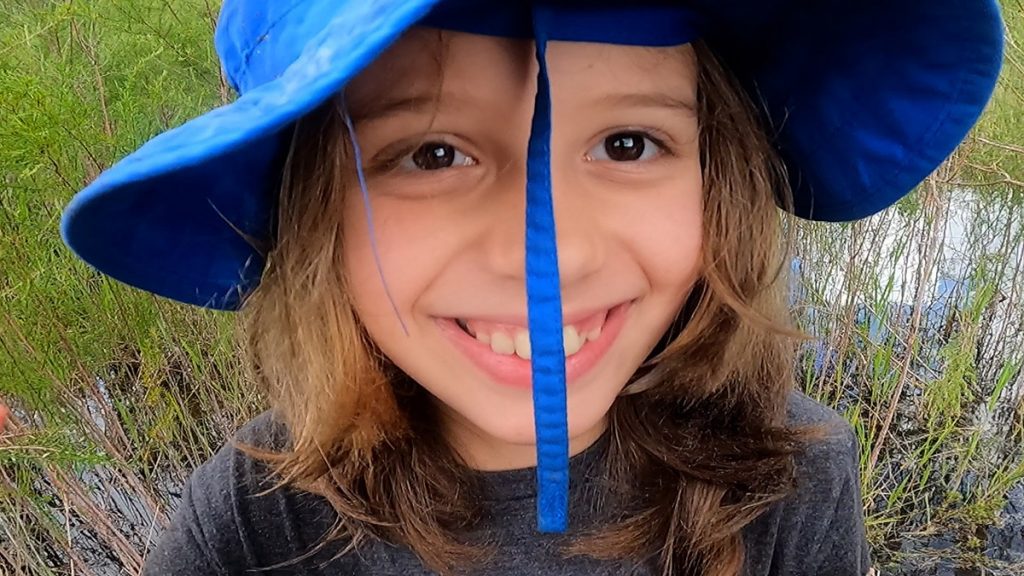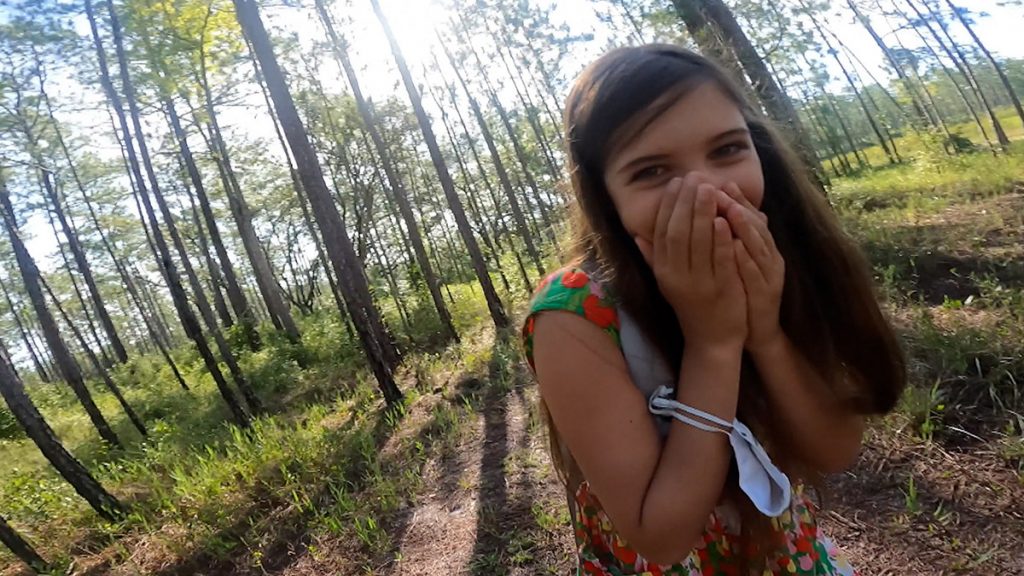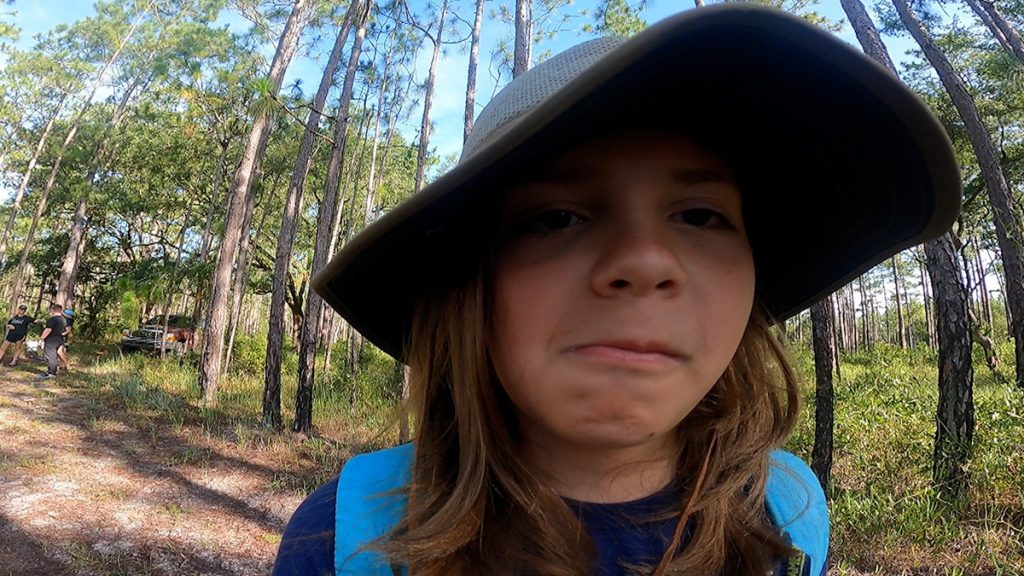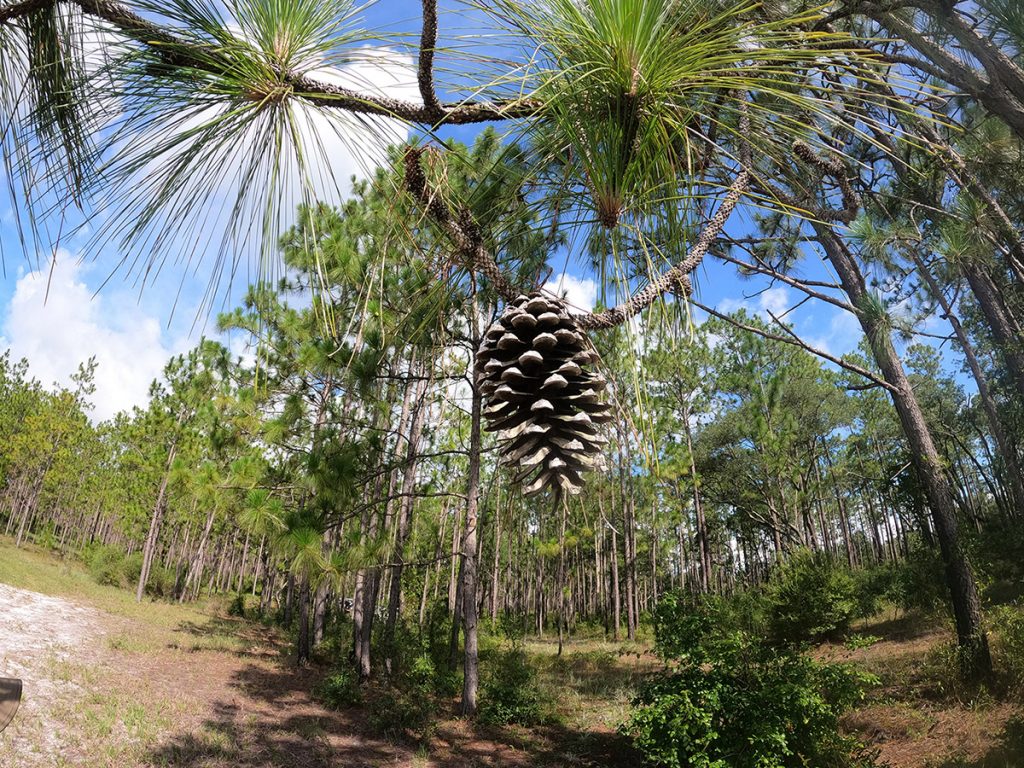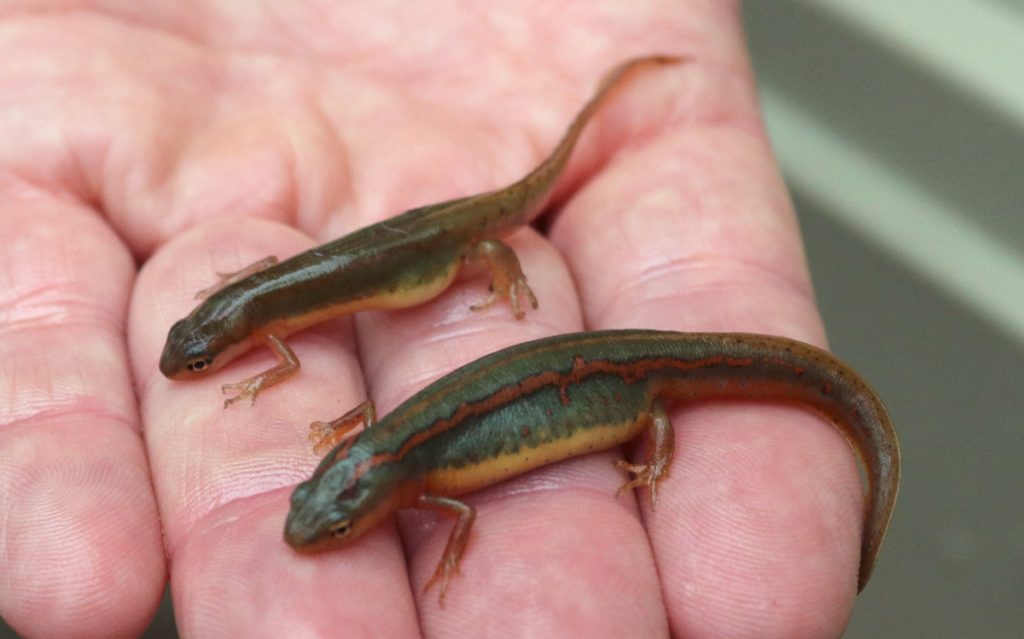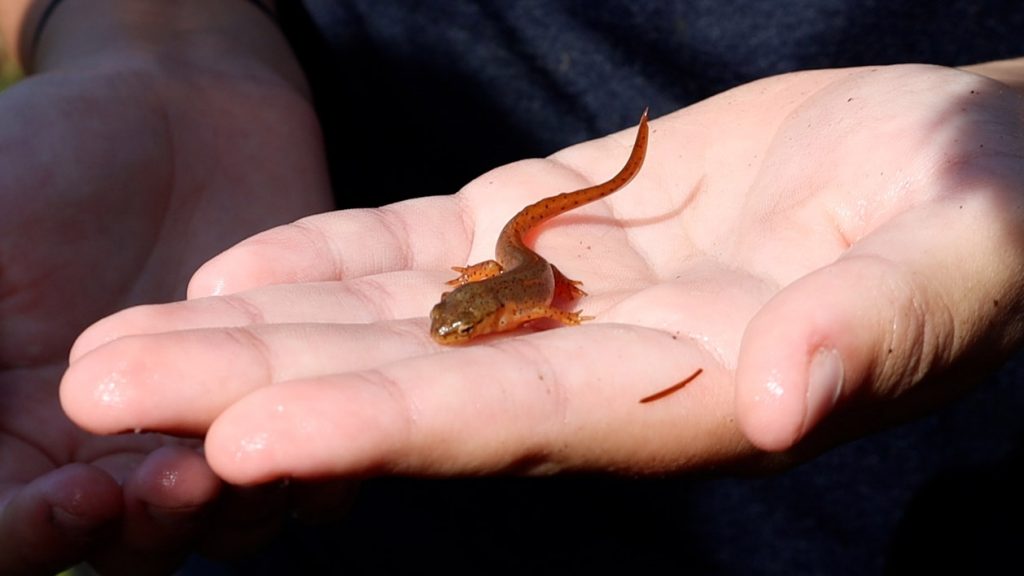“Whoa, Mr. Rob!” shouts Olivia, “there are some of those carnivorous plants!” Upon closer inspection, the reddish splotches by our feet are sticky little pink sundews. It’s the kind of moist area plant you might expect just outside an ephemeral wetland. Here in the shadow of a few pines, my son Xavi shows Ryan Means a spider that’s crawling on his hand. We talk plants and animals of the Munson Sandhills as a new batch of striped newts becomes acclimated to the wetland water.
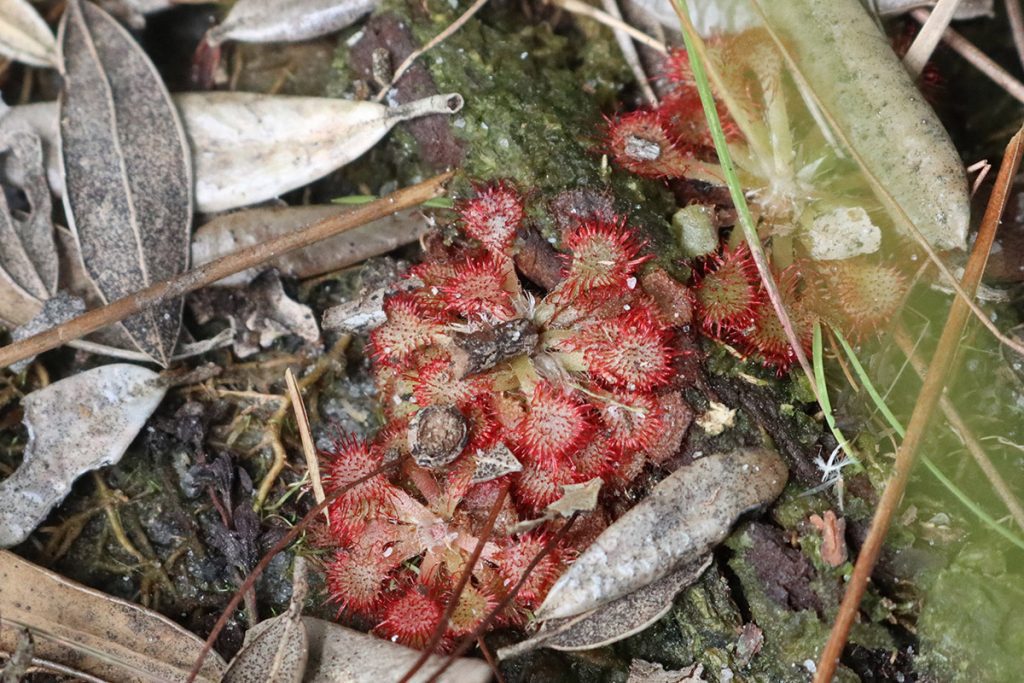
That process is longer than it had been for previous newt releases, as the Coastal Plains Institute has taken a closer look at water chemistry this year. For instance, they’ve found that there’s less oxygen in the water in the early morning. Today, some of the newts they’re releasing are younger larvae with gills, who will take oxygen from that water. So there’s more testing, and waiting, and slowly adding pond water to the newt bucket.
A little while ago, CPI and their partners, as well as me and my young crew, were standing around in the wetland while the newts acclimated. Well, my crew was squatting in the water and feeling the mud in their fingers. We were mucking up the water, so anyone not working on the acclimation left. The Munson Sandhills is always a fun place for kids to poke around, whether in or out of a wetland. At present, my crew is keeping occupied.
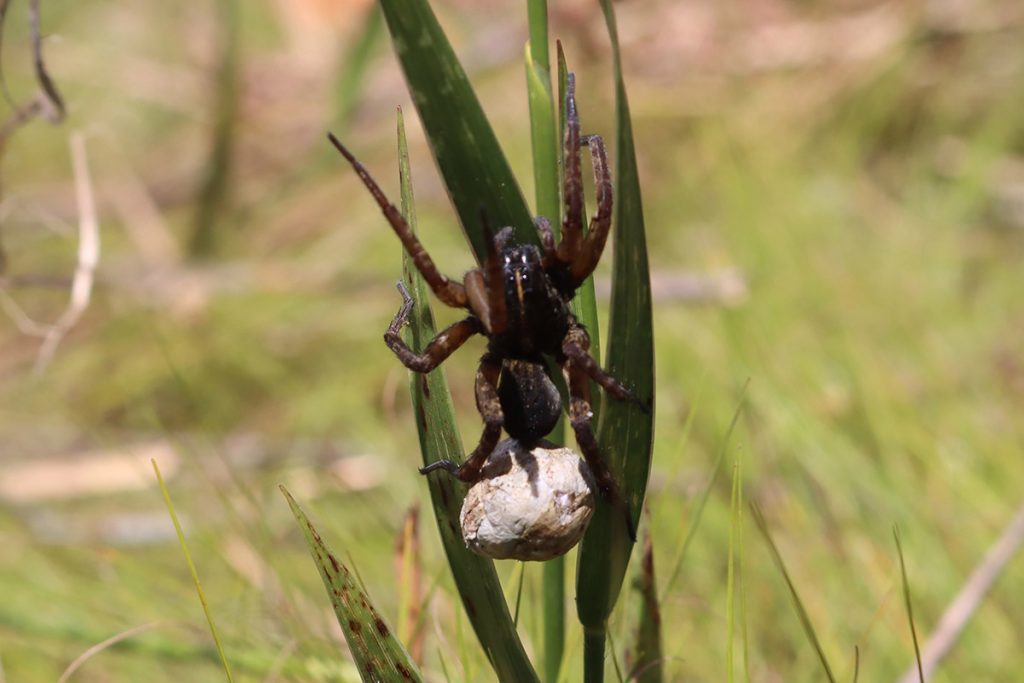
My favorite crew members are those who don’t blink at getting wet or dirty. Today’s crew, in fact, seeks out wet and dirty. That crew is my older son Max and his best friend Olivia (both aged 11), and my younger son Xavi (8). They tell the story of today’s striped newt release through video. Maybe I’m their crew on this shoot.
Today, we’ll talk about CPI’s latest striped newt release, through their perspective and mine.
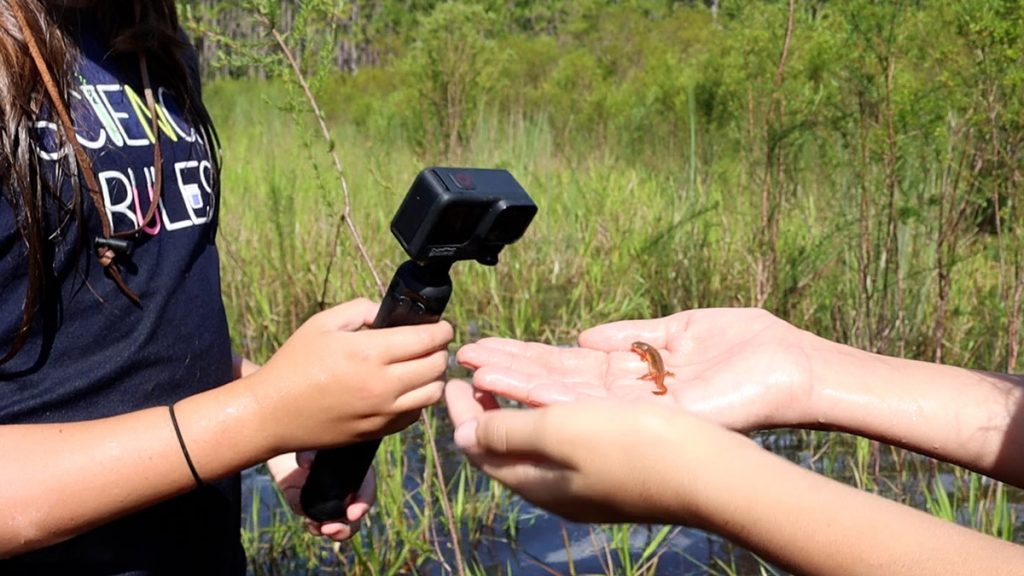
A Brief Recap of Striped Newt Repatriation Efforts
I’ve been covering striped newt releases for several years now, starting with the time four-year-old Max took part and released a few potential breeding pairs. I like to come back every year to see the repatriation project’s progress. There’s also a lot to learn by returning over time, in different seasons. Each visit sees new critters in and around the wetlands, and different plants are in bloom or are fruiting. And it gives me a photographic record of the water levels of the wetlands over time.
Because the story’s been told here a few times over the years, I’ll give just a quick recap about why CPI releases striped newts.
- Striped newts breed in ephemeral wetlands. The water in these wetlands rises and falls based on the underlying water table. Many go all the way dry at times, and fire will occasionally sweep through them.
- The wetlands are scattered throughout the Munson Sandhills region of the Apalachicola National Forest. Sandhills are a variety of fire-dependent longleaf pine habitat. When newts take their terrestrial form, the sandhills are where they live.
- Striped newts are adapted to the wet/ dry cycles of ephemeral wetlands. They lose their gills and breathe using their lungs when they leave the wetlands. Newts may also stay in the pond as mature adults with gills. These are known as paedomorphs.
- A harsh drought in the 1990s saw the newt’s Munson Sandhills breeding ponds stay dry for several years. Dry wetlands = no breeding. Striped newts were thought to have become extirpated- locally extinct- from the region. The Coastal Plains Institute then began working to repatriate them.
- For breeding the newts they release, CPI works with the Jacksonville Zoo, Detroit Zoo, the Amphibian Foundation, and the Orianne Center for Indigo Conservation, who we saw at an indigo snake release a couple months back. They started with a handful of newts from ponds in nearby south Georgia.
New Striped Newt Wetlands
Of course, there’s a lot more to it than that, but I’ll let my young team help tell the rest story.
We start our day bumping along a forest road, following CPI and their partners. We pass the turn for the wetlands they’d used in the past, and we bump along for a while longer. This morning, CPI Director Rebecca Means wrote to make sure I had a vehicle with a decent clearance; recent rains had deepened grooves in the dirt roads. It’s been a wet July, enough to fill the Porter Sink basin in Lake Jackson after a mostly dry year. The recent rain should similarly make the wetlands hospitable to newts.
We’re not heading to any of the three wetlands they’ve used in previous years. The Coastal Plains Institute placed liners below the sediments of those ponds so they’d hold water during harsh droughts. Today, though, we’re visiting a pair of side-by-side, unlined wetlands. They’re wide, and they hold water when other nearby wetlands go dry.
Earlier this year, CPI lined another wetland for newts as well. Striped newts are slowly expanding their footprint in the forest.
As soon as we hop out of the car, I hand Max a GoPro camera on a selfie stick, and he and Olivia start hosting what they call their Vlog. Going in to today, I had some notion of how I might incorporate the kids into the video, but they immediately start rattling off intro takes and start gathering footage. So, it’s not so much that I’m incorporating them- this is their video now.
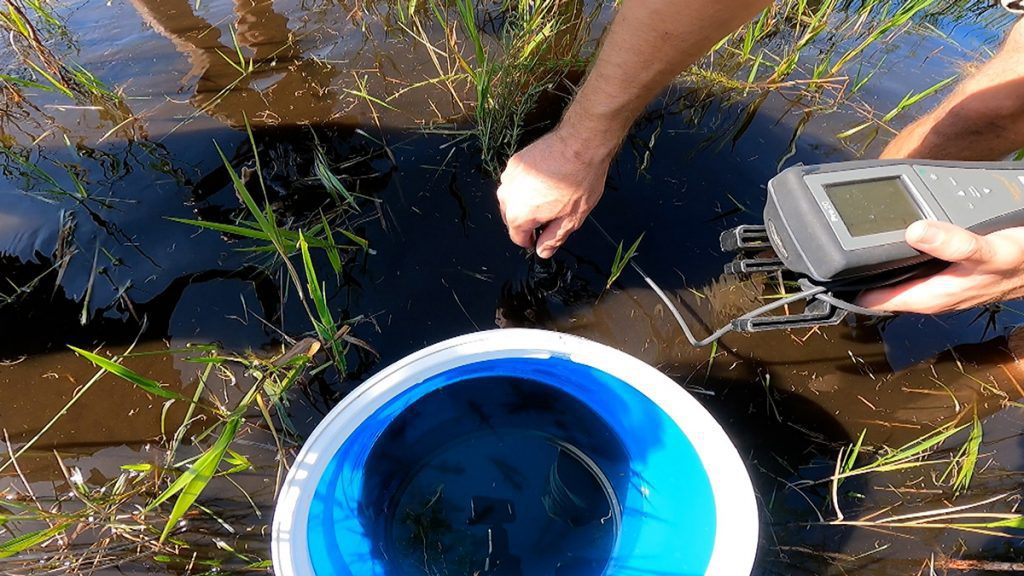
Getting Newts Used to Their New Home
We walk into the first wetland and… wait.
There’s always been an acclimation process for newt releases. The newts come in water from their breeding facilities. The release team slowly adds water from the recipient wetland into their bucket, and dumps out the other water. This gets the newts used to the water chemistry of their new home, which is especially important for gill breathers.
Rushing the process can hurt or kill the newts, as CPI found out yesterday. A couple of larvae died in a bucket from too fast a switch. The reason? Low oxygen in the water.
When the sun goes down, plants can’t take in its light. “They shut off photosynthesis for what, four hours at night, and start synthesizing sugars and stuff they need for growth,” says FWC biologist Pierson Hill. During this time, they’re not releasing oxygen into the wetland.
Newts and other amphibians in the wetland are used to this nightly dip in dissolved oxygen. For the larvae entering the pond, it would be a shock. But, as CPI President Ryan Means points out, the sun is shining. Plants are taking carbon dioxide out of the water, and transpiring oxygen into it. With every passing minute, the wetland becomes more “breathable.” For now, though, we wait.
Rebecca says they’re working with the zoos to get them water chemistry information ahead of time, so that they can recreate it as closely as possible. This should reduce the wait time in the future.
Releasing Newts!
The kids soon find out that newts will run right out of your hand and into the water. They squirm and wiggle, and as Olivia says, they’re so light you barely feel them. Max, who goes by Maxolotl in the video, appreciates this movement once they’re safely in the water. “It’s like they’re dancing.”
They release adult newts first. When CPI releases in the winter, they release adults ready for breeding. Winter is their breeding season, and the hope is that they soon start making new newts.
In the summer, CPI releases adults and larvae of different ages. This is the first time I’ve seen newts as young as these, still slightly translucent.
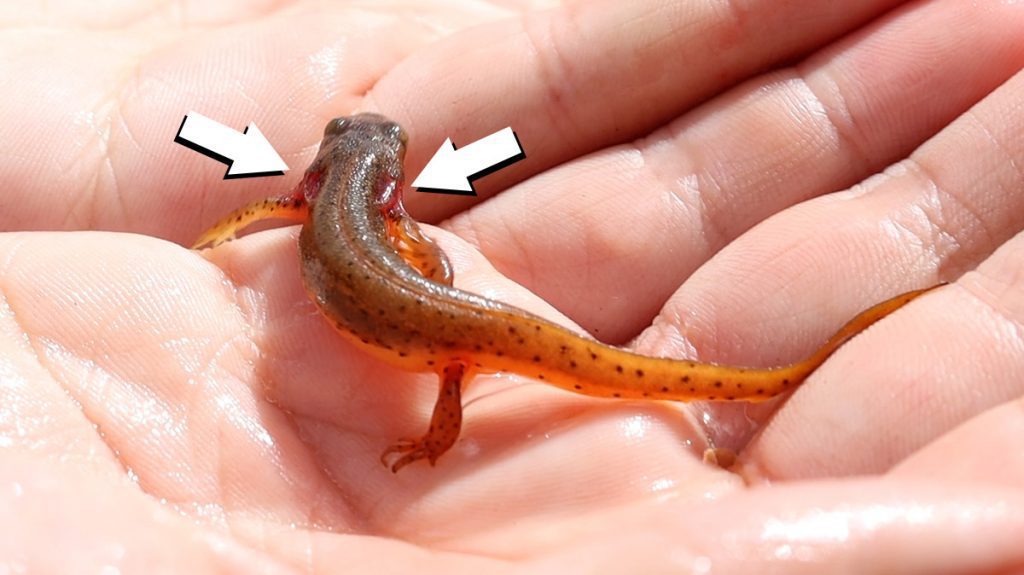
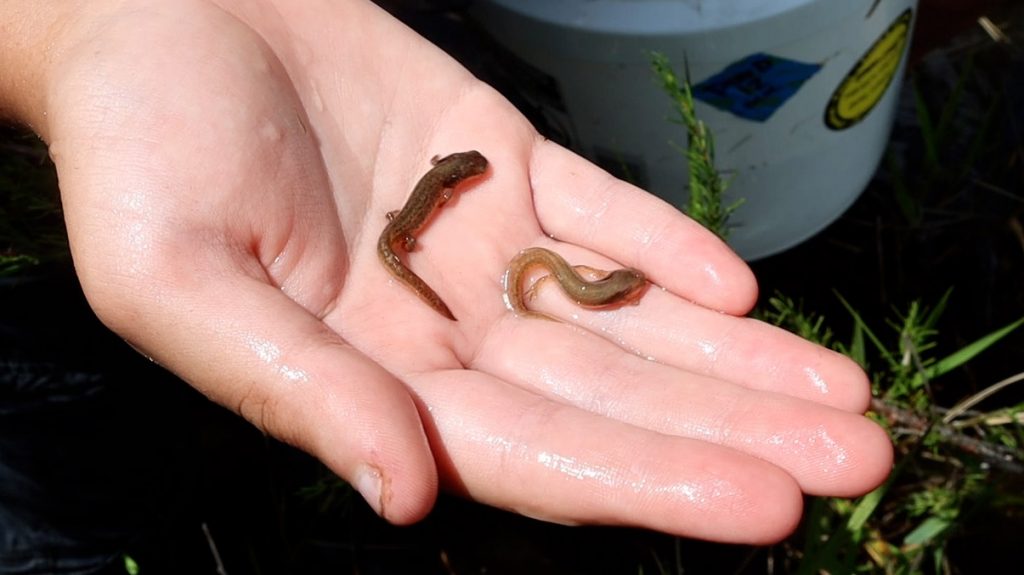
Today, the kids get to see- and hold- multiple life stages of striped newt. But Xavi wonders…
How Many Newts From Previous Releases Are Still Around?
“You know, we don’t know exactly how many newts are around from the prior release.” Ryan says. Earlier this year, they released newts- breeding adults- into this pond for the first time. “But what’s really important is that we know some, at least, are around. More than zero, and that that is a very important scientific piece of information. And we determine that by scooping a dipnet out there before (and after) releasing. We found one adult and one larva.”
Ryan says that heavy dipnetting would tear up the wetland and harm the newt’s habitat. So they net until they find evidence of survival and breeding, and stop. What they most need to know is that newts are able to live there.
Xavi wants to know about previous releases as well. Ryan, Rebecca, and their volunteers have found multiple previously released adults, and their larvae, over the years. For such small animals, you figure that for every one you find, there may be several more out there. Released adults are marked with dye under each arm, creating a unique four-color combination for each newt. When they’re found, CPI knows when and where they released them.
I’ll note that when they’ve released in their lined wetlands, CPI encircle the wetlands with a drift fence. Newts leaving, and newts returning, fall into traps that are checked daily. This way, they know who is coming and going. An unmarked newt leaving those ponds is the child of released newts.
A few years back, an unmarked newt was found in a non-recipient wetland of the Munson Sandhills. This was one of the last of the area’s original newts, and it was taken to a breeding facility to add its DNA to the mix.
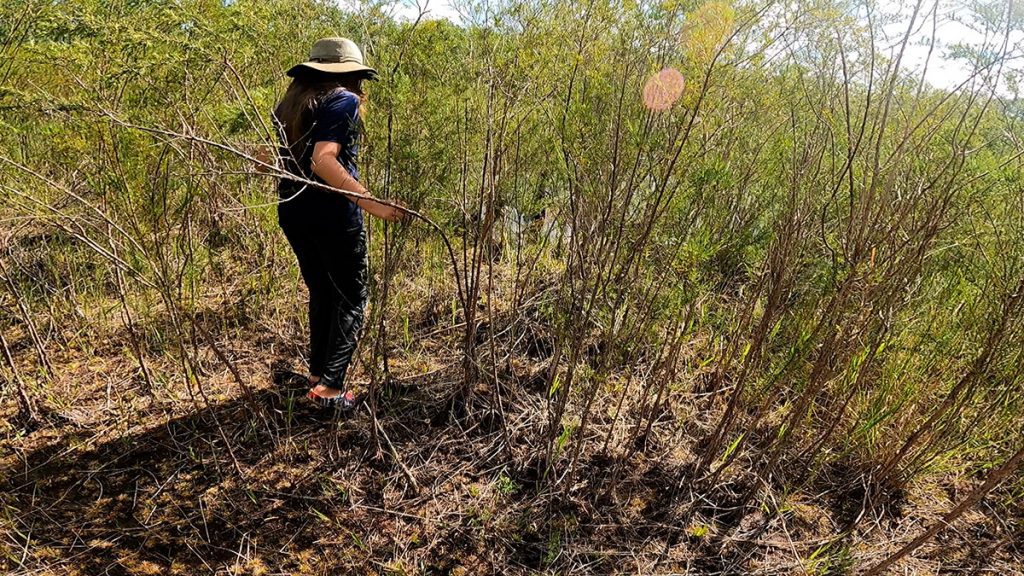
On to the Second Wetland
Done with the first pond’s newts, we head to the second. We cross through a maze of shrubs to enter it. Wetlands in the Munson Sandhills are often lined with woody plants such as buttonbush, St. John’s wort, and hollies. They grow as big as they can between fires; the larger the shrub, the longer since fire has reached the pond edge.
In the wetland, Ryan points out the dense maidencane (Panicum hemitomon) at the center of the pond. The grass is too dense for much wildlife, he says. Nearer the edge, more diversity- pipeworts, short St. Johns wort plants, and yellow eyed grass (Xyris species), among others. Ryan points out how much more open the water is here at the edge, but still full of plants to shelter newts.
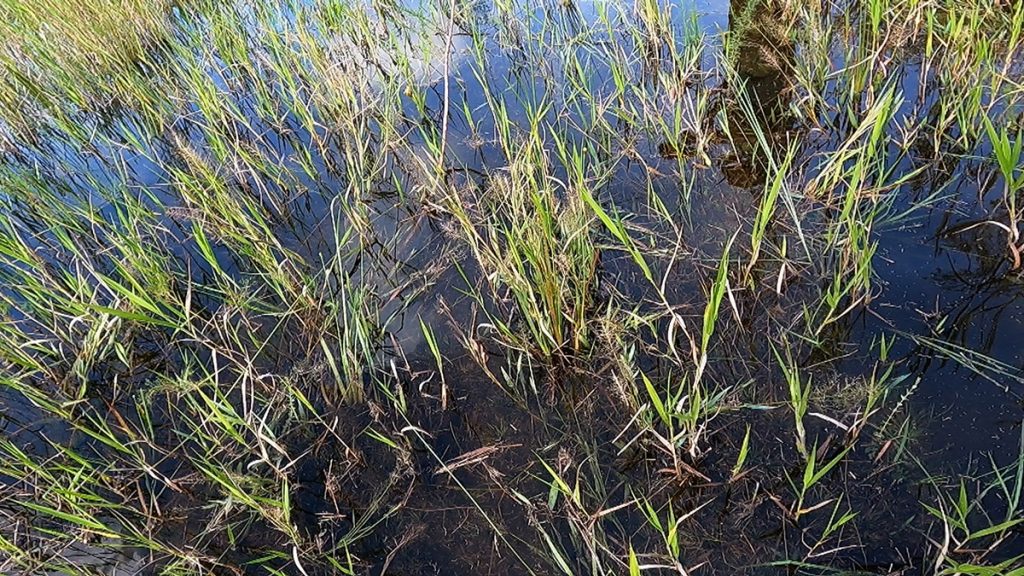
When wetlands go dry in the summer and lightning strikes, fires can burn away their vegetation. Like all plants here, the grasses and other plants in the pond regrow from the roots after a fire. Without fire, the wetlands would become crowded, and unlivable for the amphibians adapted to them.
Heading away from the wetland, sundews carpet the ground. And then, as we head back to the car, Ryan shows the kids several deerberry (Vaccinium stamineum) bushes. These native blueberries are ripe now, in July, and are a welcome end to our adventure.
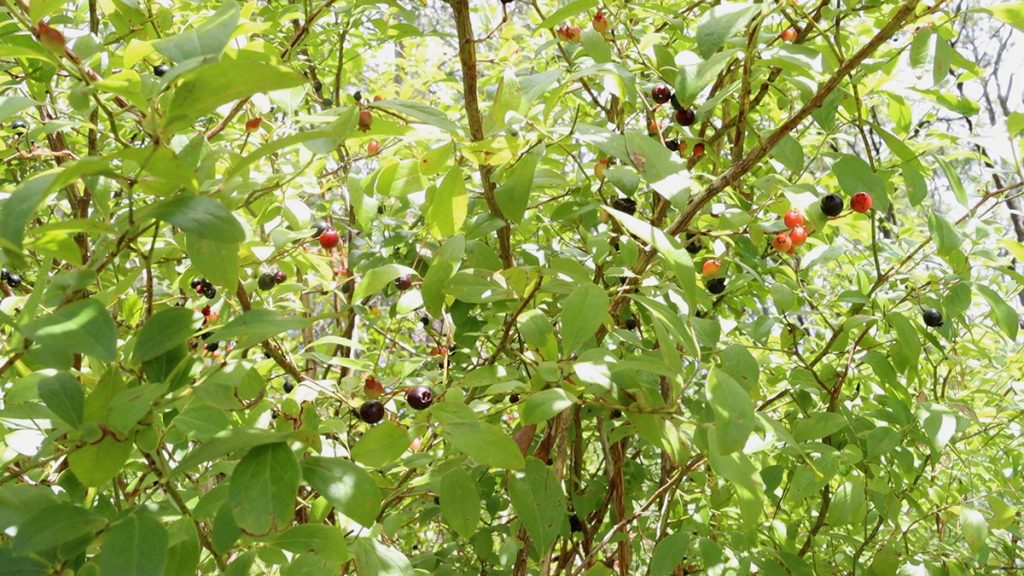
Building Resiliency in the Striped Newt Population
A few months back, we visited another section of the Apalachicola National Forest with a different kind of ephemeral wetland, and a different salamander species struggling to hang on there. The frosted flatwoods salamander is, like the striped newt, affected by drought.
Ryan talked a little about the difference between those wetlands and those here in the Munson Sandhills. Out there, along the Apalachicola River, a hard clay layer underlies the longleaf forest. This stops water from draining downward, as it does here, where sand overlays porous limestone. Ponds here are connected to groundwater; ponds there are filled directly by rainwater. Both have been affected by harsh droughts in recent years.
Pierson Hill leads the effort to protect the frosted flatwoods salamander and its wetlands near Sumatra, Florida. Just this year, the Amphibian Foundation started the first efforts to breed the salamander. Pierson hopes this will eventually allow their team to expand their population to new ponds. As he said in that piece, their best defense against climate change is redundancy. More ponds mean that less of the total population is concentrated in any one place, increasing the odds of surviving harsh climate extremes.
This year, the Coastal Plains Institute is expanding into new ponds. They’re establishing striped newt populations over a greater area. While harsh droughts are becoming normal, having more ponds gives the newt population better overall resiliency.
Around noon, the sky darkens, and we get in the car just in time for the deluge. At this exact moment, anyway, water is saturating the water table, and newts are swimming in new wetlands.
I’ll end with some pics of kids having fun with a GoPro:
